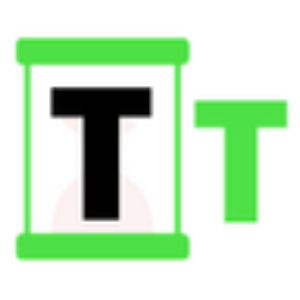Market Pulse
In a significant development signaling the deepening integration of traditional finance with the burgeoning digital asset space, the Swiss Exchange Group (SIX) has announced its decision to bring its pioneering digital assets unit, SIX Digital Exchange (SDX), entirely in-house. This strategic move is poised to strengthen the foundation for digital securities issuance, trading, and settlement, further solidifying Switzerland’s position as a hub for innovative financial technology and setting a precedent for other global financial market infrastructures.
The Strategic Rationale Behind the Consolidation
SIX Group, a leading global provider of financial market infrastructure, created SDX as a standalone entity to innovate within the digital asset realm while navigating complex regulatory landscapes. The decision to now fully integrate SDX underscores a mature vision where digital assets are no longer considered an experimental fringe but a core component of future financial markets. By bringing SDX in-house, SIX aims to unlock greater synergies, enhance operational efficiency, and streamline its overall strategy for digital securities.
- Enhanced Synergies: Direct integration allows SDX to leverage SIX’s extensive infrastructure, client network, and operational expertise more seamlessly, fostering cross-pollination of ideas and resources.
- Streamlined Governance: Consolidating the unit under the direct corporate structure simplifies decision-making processes and resource allocation, accelerating development and market responsiveness.
- Cost Efficiency: Reducing overheads associated with operating a separate entity can lead to better resource utilization and potentially faster time-to-market for new offerings.
- Unified Strategy: It ensures that the digital asset strategy is fully aligned with SIX Group’s broader long-term objectives, presenting a unified front to clients and regulators.
SDX: A Pioneer in Digital Securities Infrastructure
Launched in 2021, SDX has been at the forefront of building a fully regulated, end-to-end digital asset exchange and central securities depository (CSD) powered by distributed ledger technology (DLT). It operates under licenses from the Swiss Financial Market Supervisory Authority (FINMA) for a stock exchange and a CSD, allowing it to offer tokenized securities and other digital assets to institutional clients. SDX’s offerings range from the issuance of digital bonds to the trading and settlement of various tokenized financial products, all designed to meet the rigorous standards of traditional financial markets.
- Digital Bond Issuance: SDX has successfully facilitated the issuance of several digital bonds, demonstrating the viability of DLT for traditional financial instruments.
- DLT-based CSD: It offers a regulated central securities depository for digital assets, ensuring secure custody and settlement.
- Institutional Focus: Its services are tailored for banks, asset managers, and other institutional players looking to engage with tokenized securities.
- Regulatory Compliance: Operating within a robust regulatory framework provides a crucial layer of trust and security for institutional participants.
Broader Implications for Digital Asset Adoption
The move by a prominent traditional financial institution like SIX is a powerful endorsement of blockchain technology’s potential to revolutionize capital markets. It signals a growing recognition that digital assets are not merely speculative cryptocurrencies but represent a fundamental shift in how securities can be issued, traded, and managed. This integration is likely to encourage other major exchanges and financial institutions globally to accelerate their digital asset strategies, potentially leading to:
- Increased Institutional Confidence: Seeing a major, regulated player fully embed digital asset capabilities provides further validation, reducing perceived risks for other institutions.
- Enhanced Liquidity: As more institutional capital flows into digital securities, liquidity pools are expected to deepen, making these markets more attractive.
- Regulatory Clarity: Moves by established entities within regulated frameworks can indirectly push for greater regulatory clarity and harmonization across jurisdictions.
- Innovation Acceleration: Greater integration fosters innovation in product development, potentially leading to new types of tokenized assets and more efficient market structures.
Conclusion
The Swiss Exchange Group’s decision to bring SDX in-house is more than just an organizational restructuring; it’s a profound statement on the future direction of finance. It underscores a strategic pivot by traditional financial powerhouses towards embracing distributed ledger technology and tokenized securities as integral components of their core business. This consolidation is a bullish indicator for the digital asset industry, suggesting that the line between traditional and digital finance is not merely blurring but actively merging, paving the way for a more integrated, efficient, and innovative global financial ecosystem in the years to come.
Pros (Bullish Points)
- Validates digital asset technology for institutional use, fostering broader adoption.
- Streamlines operations and governance for SDX, potentially leading to faster innovation.
Cons (Bearish Points)
- Integration complexities could introduce short-term operational challenges.
- The pace of adoption of digital securities by other institutions remains a variable.



